Презентация Wage Determination


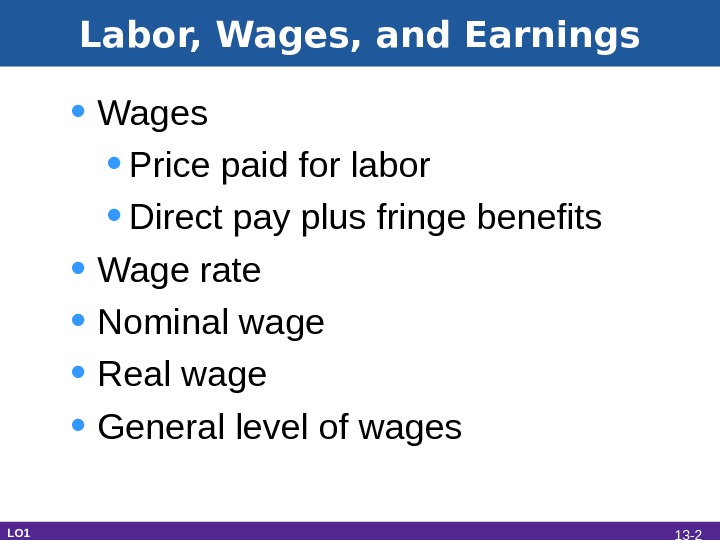

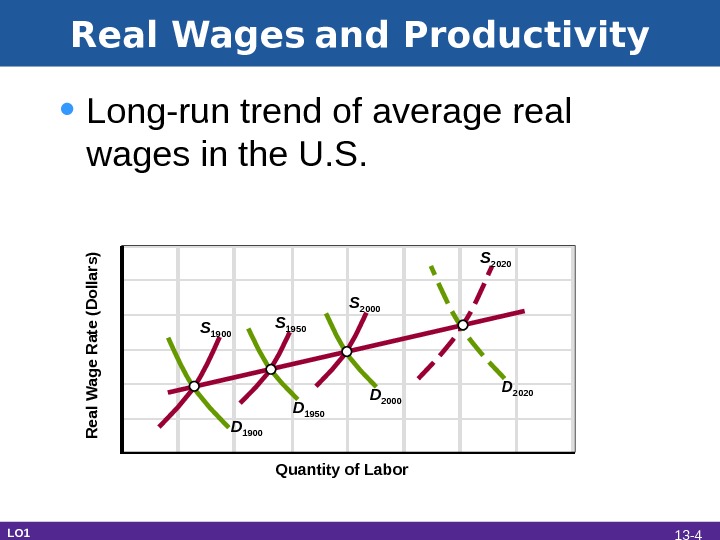

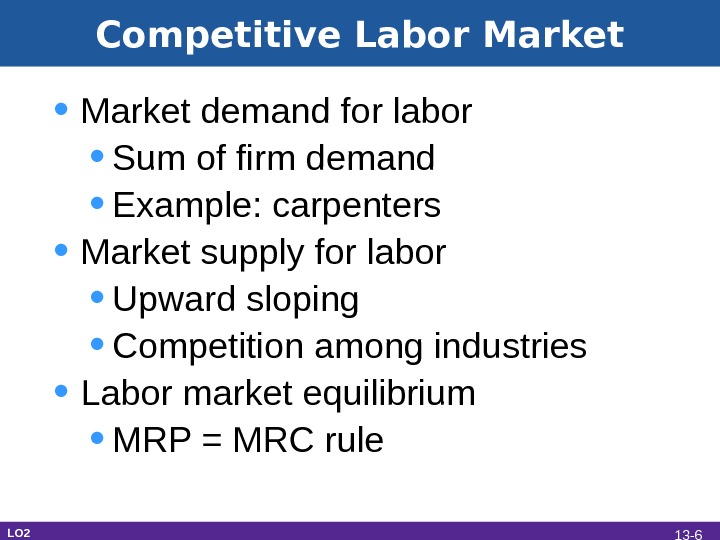



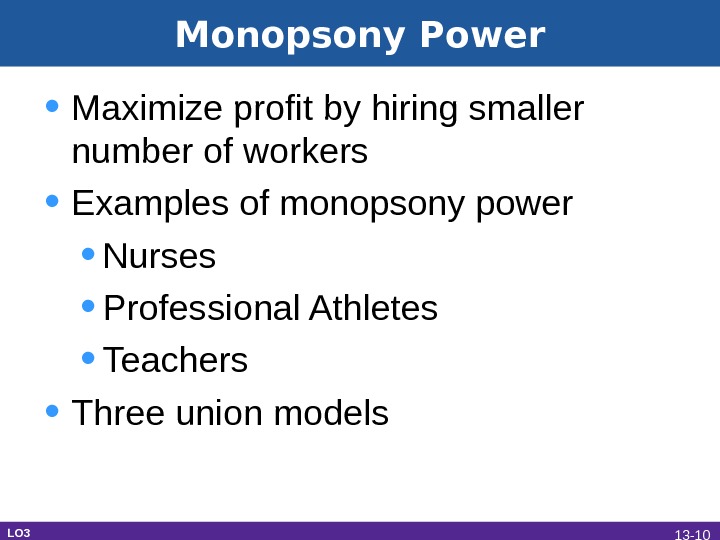


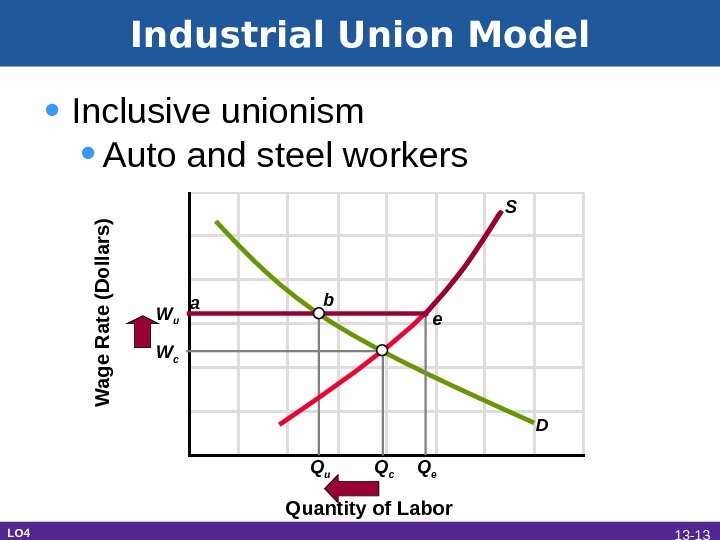

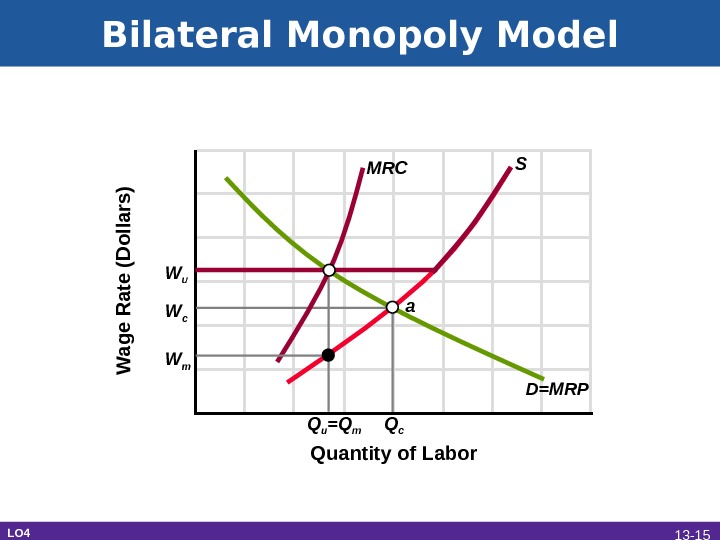


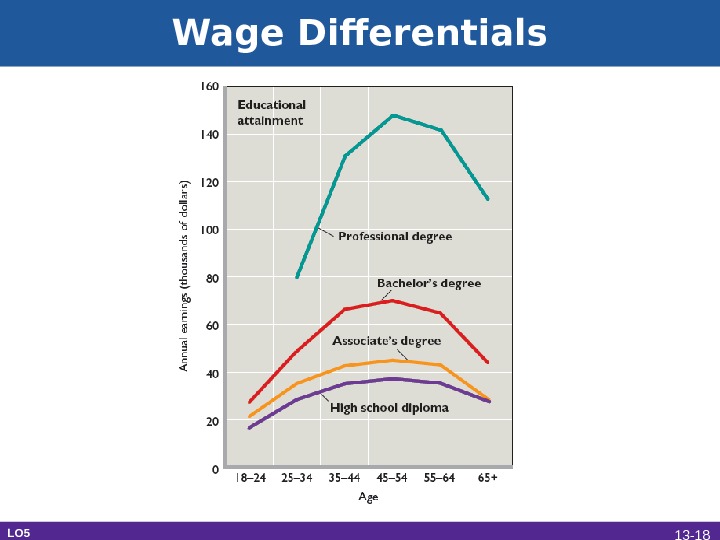

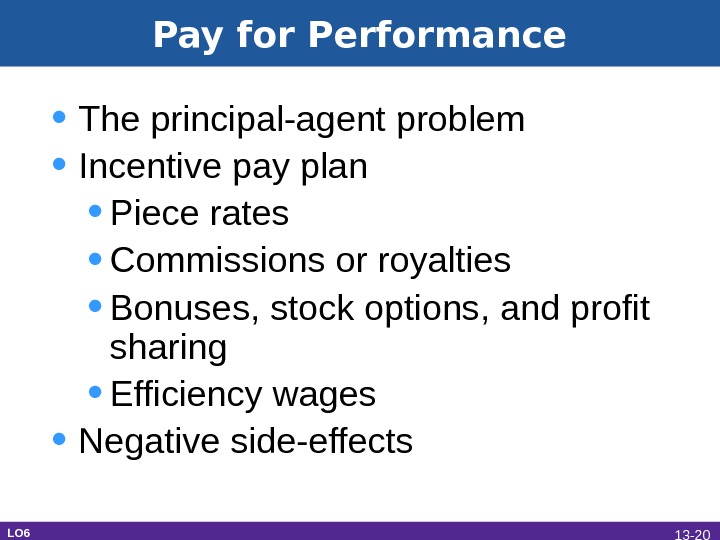
- Размер: 976 Кб
- Количество слайдов: 20
Описание презентации Презентация Wage Determination по слайдам
 13 Wage Determination Mc. Graw-Hill/Irwin Copyright © 2012 by The Mc. Graw-Hill Companies, Inc. All rights reserved.
13 Wage Determination Mc. Graw-Hill/Irwin Copyright © 2012 by The Mc. Graw-Hill Companies, Inc. All rights reserved.
 Labor, Wages, and Earnings • Wages • Price paid for labor • Direct pay plus fringe benefits • Wage rate • Nominal wage • Real wage • General level of wages LO 1 13 —
Labor, Wages, and Earnings • Wages • Price paid for labor • Direct pay plus fringe benefits • Wage rate • Nominal wage • Real wage • General level of wages LO 1 13 —
 Role of Productivity • Labor demand depends on productivity • U. S. labor is highly productive • Plentiful capital • Access to abundant natural resources • Advanced technology • Labor quality • Other factors LO 1 13 —
Role of Productivity • Labor demand depends on productivity • U. S. labor is highly productive • Plentiful capital • Access to abundant natural resources • Advanced technology • Labor quality • Other factors LO 1 13 —
 Real Wages and Productivity • Long-run trend of average real wages in the U. S. R eal W age R ate (D ollars) Quantity of Labor. D 1900 S 1900 D 1950 D 2000 D 2020 S 1950 S 2000 S 2020 LO 1 13 —
Real Wages and Productivity • Long-run trend of average real wages in the U. S. R eal W age R ate (D ollars) Quantity of Labor. D 1900 S 1900 D 1950 D 2000 D 2020 S 1950 S 2000 S 2020 LO 1 13 —
 Real Wages and Productivity LO 1 13 —
Real Wages and Productivity LO 1 13 —
 Competitive Labor Market • Market demand for labor • Sum of firm demand • Example: carpenters • Market supply for labor • Upward sloping • Competition among industries • Labor market equilibrium • MRP = MRC rule LO 2 13 —
Competitive Labor Market • Market demand for labor • Sum of firm demand • Example: carpenters • Market supply for labor • Upward sloping • Competition among industries • Labor market equilibrium • MRP = MRC rule LO 2 13 —
 ($10) W CW age R ate (D ollars)Labor Market Quantity of Labor W age R ate (D ollars) Individual Firm Quantity of Labor. Q C (1000)0 0 d=mrp q C (5) s= MRCCompetitive Labor Market LO 2 D= MRP (∑ mrp’s )S e ba c 13 —
($10) W CW age R ate (D ollars)Labor Market Quantity of Labor W age R ate (D ollars) Individual Firm Quantity of Labor. Q C (1000)0 0 d=mrp q C (5) s= MRCCompetitive Labor Market LO 2 D= MRP (∑ mrp’s )S e ba c 13 —
 Monopsony Model • Employer has buying power • Characteristics • Single buyer • Labor immobile • Firm “wage maker” • Firm labor supply is upward sloping • MRC higher than wage rate • Equilibrium LO 3 13 —
Monopsony Model • Employer has buying power • Characteristics • Single buyer • Labor immobile • Firm “wage maker” • Firm labor supply is upward sloping • MRC higher than wage rate • Equilibrium LO 3 13 —
 • Examples of monopsony power Monopsony Model. W a g e R a te (D o lla rs ) Quantity of Labor 0 S MRPMRC cb a W c W m Q c LO 3 13 —
• Examples of monopsony power Monopsony Model. W a g e R a te (D o lla rs ) Quantity of Labor 0 S MRPMRC cb a W c W m Q c LO 3 13 —
 Monopsony Power • Maximize profit by hiring smaller number of workers • Examples of monopsony power • Nurses • Professional Athletes • Teachers • Three union models LO 3 13 —
Monopsony Power • Maximize profit by hiring smaller number of workers • Examples of monopsony power • Nurses • Professional Athletes • Teachers • Three union models LO 3 13 —
 Demand Enhancement Model • Union model • Increase product demand • Alter price of other inputs. W a g e R a te (D o lla rs ) Quantity of Labor. W u Q c Q u. W c D 1 D 2 S Increase In Demand LO 4 13 —
Demand Enhancement Model • Union model • Increase product demand • Alter price of other inputs. W a g e R a te (D o lla rs ) Quantity of Labor. W u Q c Q u. W c D 1 D 2 S Increase In Demand LO 4 13 —
 W a g e R a te (D o lla rs )Quantity of Labor DS 1 Q c. W c S 2 W u Q u Decrease In Supply. Craft Union Model LO 4 13 —
W a g e R a te (D o lla rs )Quantity of Labor DS 1 Q c. W c S 2 W u Q u Decrease In Supply. Craft Union Model LO 4 13 —
 Industrial Union Model • Inclusive unionism • Auto and steel workers. W a g e R a te (D o lla rs ) Quantity of Labor DS Q c. W u Q ea b e LO 4 13 —
Industrial Union Model • Inclusive unionism • Auto and steel workers. W a g e R a te (D o lla rs ) Quantity of Labor DS Q c. W u Q ea b e LO 4 13 —
 Bilateral Monopoly Model • Monopsony and inclusive unionism • Single buyer and seller • Not uncommon • Indeterminate outcome • Desirability LO 4 13 —
Bilateral Monopoly Model • Monopsony and inclusive unionism • Single buyer and seller • Not uncommon • Indeterminate outcome • Desirability LO 4 13 —
 Bilateral Monopoly Model LO 4 W a g e R a te (D o lla rs ) Quantity of Labor D=MRPS Q c. W u Q u =Q m MRC W m a 13 —
Bilateral Monopoly Model LO 4 W a g e R a te (D o lla rs ) Quantity of Labor D=MRPS Q c. W u Q u =Q m MRC W m a 13 —
 The Minimum Wage Controversy • Case against minimum wage • Case for minimum wage • State and locally set rates • Evidence and conclusions LO 5 13 —
The Minimum Wage Controversy • Case against minimum wage • Case for minimum wage • State and locally set rates • Evidence and conclusions LO 5 13 —
 • Differences across occupations • What explains wage differentials? • Marginal revenue productivity • Noncompeting groups • Ability • Education and training • Compensating differences LO 5 Wage Differentials 13 —
• Differences across occupations • What explains wage differentials? • Marginal revenue productivity • Noncompeting groups • Ability • Education and training • Compensating differences LO 5 Wage Differentials 13 —
 Wage Differentials LO 5 13 —
Wage Differentials LO 5 13 —
 Wage Differentials • Workers prevented from moving to higher paying jobs • Market imperfections • Lack of job information • Geographic immobility • Unions and government restraints • Discrimination LO 5 13 —
Wage Differentials • Workers prevented from moving to higher paying jobs • Market imperfections • Lack of job information • Geographic immobility • Unions and government restraints • Discrimination LO 5 13 —
 Pay for Performance • The principal-agent problem • Incentive pay plan • Piece rates • Commissions or royalties • Bonuses, stock options, and profit sharing • Efficiency wages • Negative side-effects LO 6 13 —
Pay for Performance • The principal-agent problem • Incentive pay plan • Piece rates • Commissions or royalties • Bonuses, stock options, and profit sharing • Efficiency wages • Negative side-effects LO 6 13 —

